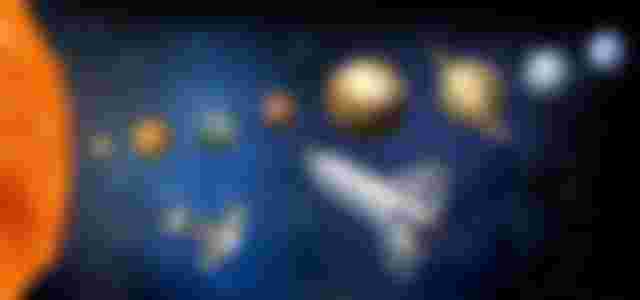We're Going On A Little Journey Through The Solar System #3
Journey to the Realm of the Ice Giants
Yes, we have come to the end of this series of articles. This will be the last article in our series on examining the atmospheres of planets in our Solar System. Without wasting any time, let's start our review.

Next up is Saturn, perhaps the most notable planet in the Solar system because of its rings. Saturn, a gas giant like Jupiter, also hosts similar storms. Saturn, with clouds of yellow, brown and gray tones, has storms that form less pronounced bands than Jupiter. While the winds on our planet can travel up to 110 meters per second, on Saturn the winds can exceed 500 meters per second.
The most conspicuous celestial event in Saturn's atmosphere is the six-sided rapid air current in the north polar region. Discovered by the Voyager spacecraft in 1981 and visited again by the Cassini vehicle in 2006, this interesting structure has a width of approximately 30 thousand kilometers.
Having come all the way to Saturn, it is not possible to stop by its moon Titan. Because it is the only one with a thick atmosphere among more than 150 moons in the solar system. Titan's atmosphere is mostly nitrogen, with the remainder composed of methane gas and other carbonaceous materials such as methane. Since the mass of this satellite is smaller than Earth, it cannot hold its atmosphere as tightly as our planet. Therefore, Titan's atmosphere extends to about 10 times higher than Earth's.
Gases in Titan's atmosphere are broken down by the Sun's high-energy rays and particles accelerated by Saturn's magnetic field, forming new compounds. These compounds, which are similar to essential components for life on Earth, naturally attract the attention of scientists looking for life signals in celestial bodies. While some compounds formed in the atmosphere descend to the surface and form sand dune-like heaps, the clouds formed by the condensation of methane gas can descend to the surface in the form of methane rains.
We moved away from the sun and the atmosphere began to cool. We are now in the territory of the ice giants. The planet Uranus, which looks blue-green due to the small amount of methane in its atmosphere, can be even colder than Neptune, the farthest planet from the Sun, with its temperature that can drop to -242 degrees Celsius in places. The winds of Uranus, which can reach high speeds, blow in the opposite direction with the rotation of the planet in the equator region, while the winds at the poles blow in the same direction as the planet.
Because Uranus has an axial tilt of 98 degrees, it rotates as if it were on its side. This situation is very effective on the seasons. Uranus revolves around the sun in approximately 84 years, with a season of 21 years. In other words, a large part of the hemisphere that experiences the summer season can receive sunlight for 21 years, while the part that experiences the winter remains in the dark during this time.

We have reached the last planet of our solar system. Neptune is bright blue, while its neighbor Uranus is greenish blue, although similar atmospheric components are found. This color difference is thought to be due to a yet undiscovered compound in Neptune's atmosphere.
Despite being the furthest from the Sun and receiving the least energy from our star, the winds on Neptune can blow three times stronger than those on Jupiter. The storm called the "Great Dark Spot", imaged in the southern hemisphere about 30 years ago, is an example of strong atmospheric phenomena on the planet. Although this storm has disappeared in the intervening years, large storms continue to be observed in different parts of the planet.
Yes, we have come to the end of our solar system journey. I hope you liked my article series.
Stay with love and science…


Saya senang sekali mendengar berita tentang planet,saya sanagat suka postingan anda.